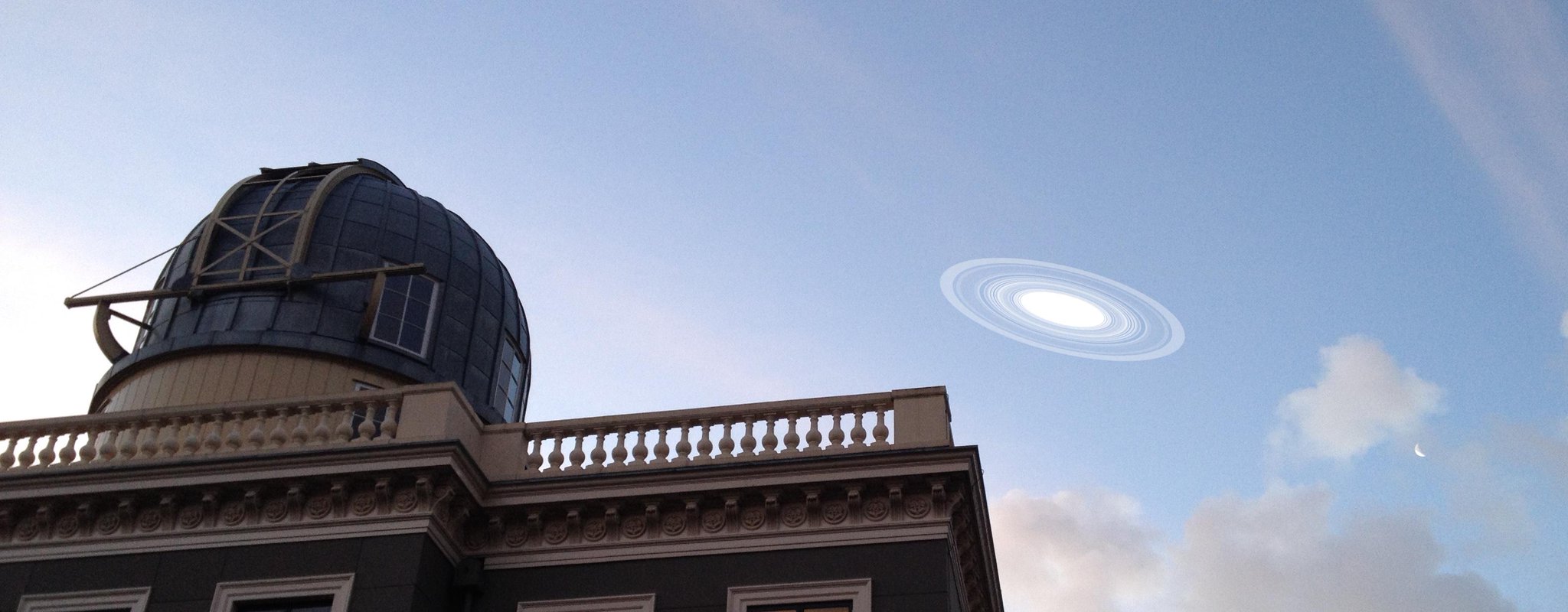
Illustration by artist Ron Miller of the gigantic ring system around J1407b.
In 1610, after he built his telescope, Galileo Galilei first spotted enormous Saturn’s gigantic rings. More than 400 years later, astronomers have in a sense dwarfed that discovery with a similar first.
Using powerful optics, they have found a much larger planet-like body, J1407b, with rings 200 times the size of Saturn’s, U.S. and Dutch astronomers said.
It lies some 400 light-years away from Earth.
For decades, scientists have believed that many moons around large planets formed out of such ring systems. But this is the first one astronomers have observed aside from Saturn’s, they said.
It was discovered in 2012, but a detailed analysis of its data was recently completed and published.
Dominating the sky

How this new Super Saturn would look in our own sky.
If J1407b were in our solar system, it would dominate Earth’s nightly sky.
“If we could replace Saturn’s rings with the rings around J1407b, they would be easily visible at night and be many times larger than the full moon,” said Matthew Kenworthy from the Netherlands’ Leiden Observatory.
Unlike Galileo peering a relatively short distance through his simple telescope, today’s astronomers can’t eyeball the rings hundreds of light-years away.
But using two very powerful optical devices with eight cameras each, they can observe the effect the rings have as they pass across nearby star J1407 — written without a ‘b’ at the end.
It is similar to our sun. The rings of planet J1407b eclipse its light.
56-day eclipse
With the enormous size of the rings, the eclipse the astronomers observed lasted 56 days.
But the star did not go completely dark for nearly two months. Some of J1407b’s 30 rings are denser, blocking more light, and some of them are less dense, letting more light through.
And there are gaps between the rings, leading the scientists to theorize that “exomoons” have formed and cut clean orbits through the debris, like the moons around Saturn.
Our own solar system’s ringed giant has at least 60 moons, according to NASA.
Bigger than a planet
Like its system of rings, planet J1407b is also much larger than Saturn, said astrophysicist Eric Mamajek, whose team at the University of Rochester discovered the object. “You could think of it as kind of a super Saturn.”
It is called a brown dwarf, a size classification somewhere between a planet and a star, according to the California Institute of Technology.
Brown dwarfs are hot but don’t burst into nuclear fusion the way stars do, so they don’t give off light.
The scientists are calling on amateur astronomers to keep an eye on star J1407 in hopes they may observe the rings eclipsing it again and report the results to the American Association of Variable Star Observers, which collects astronomical data on “stars that change in brightness.”
And astronomers will also search for more such ringed systems.
